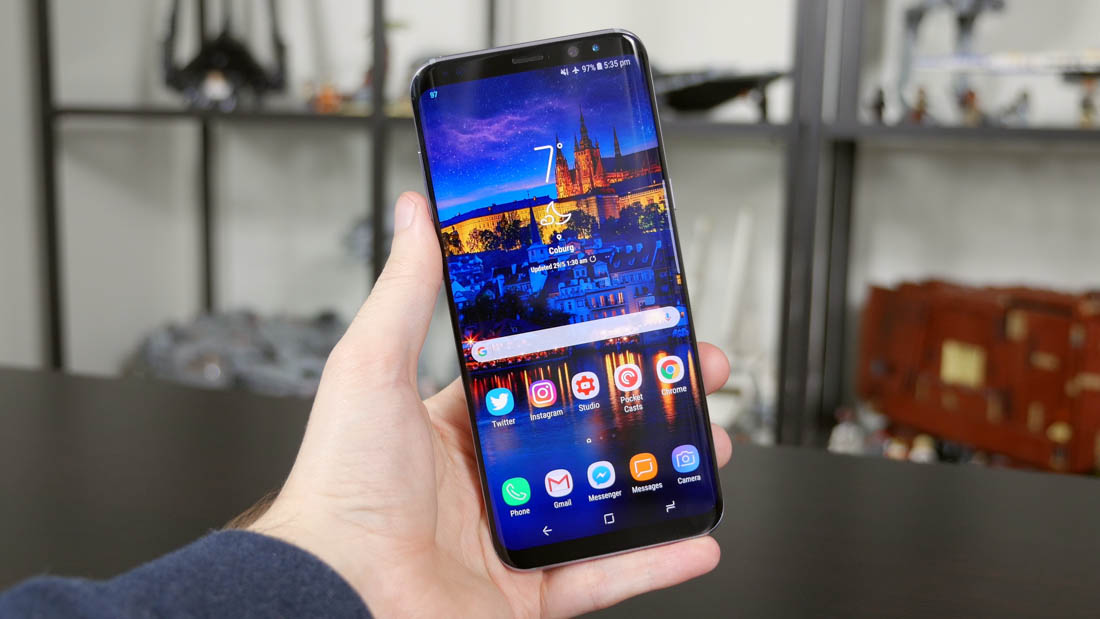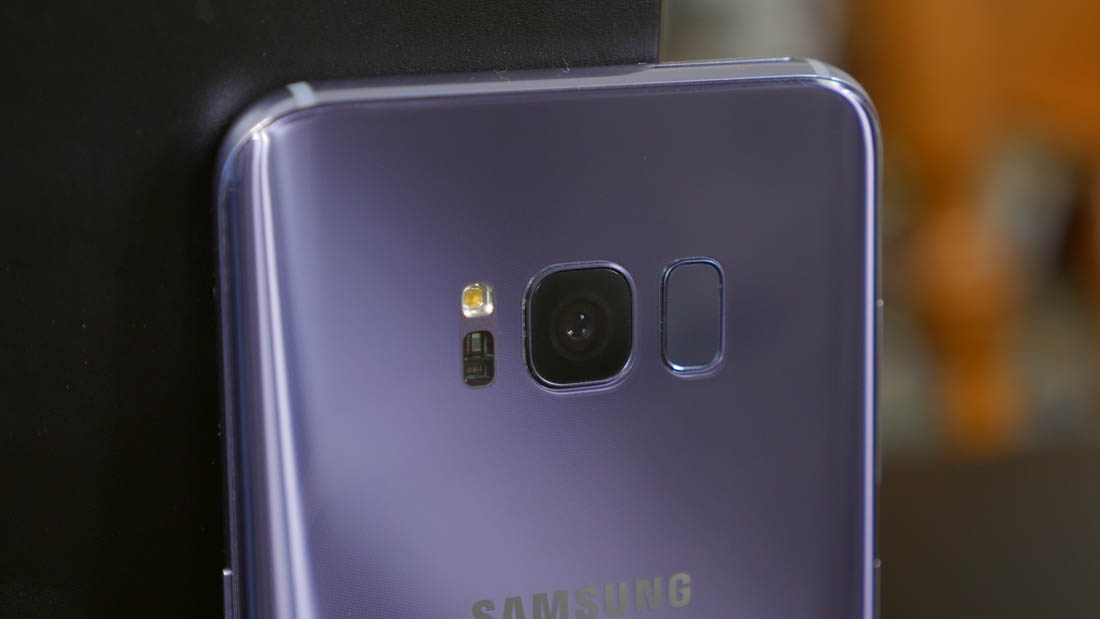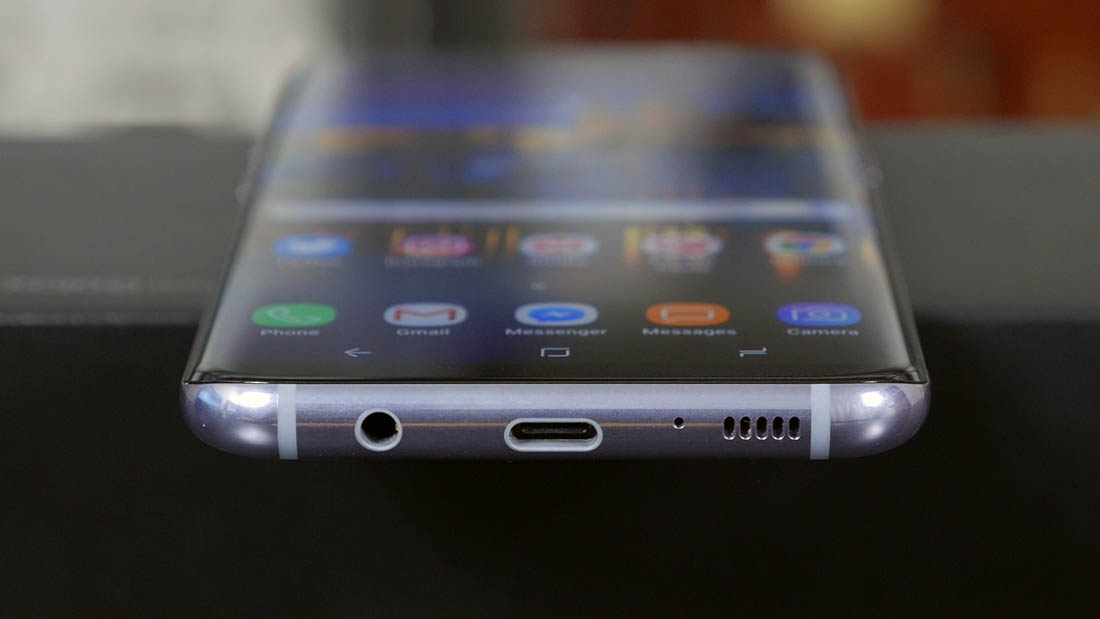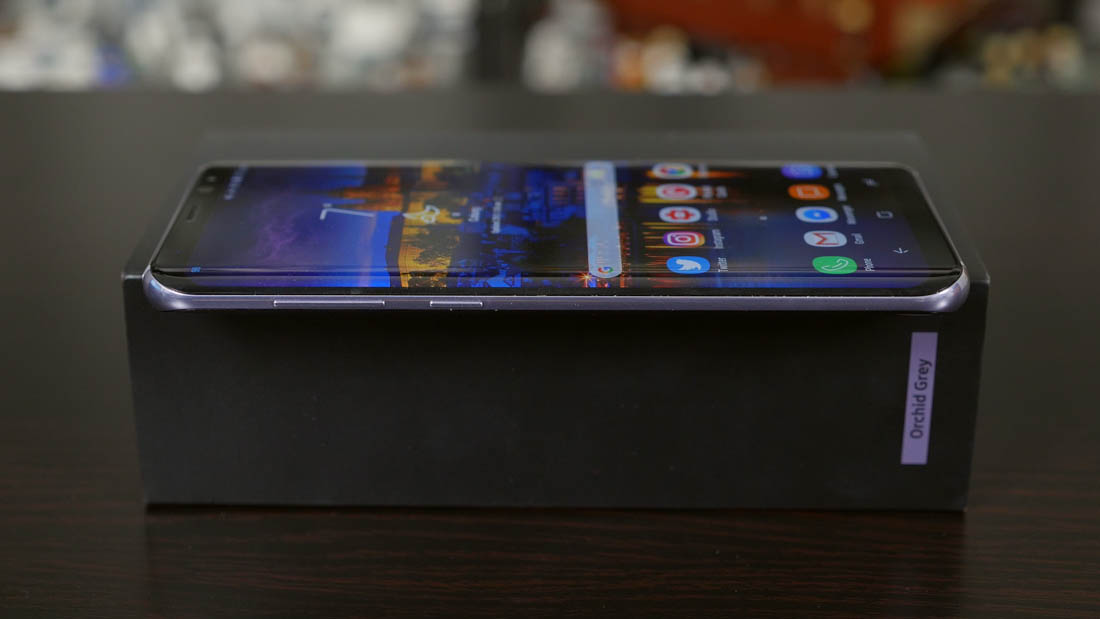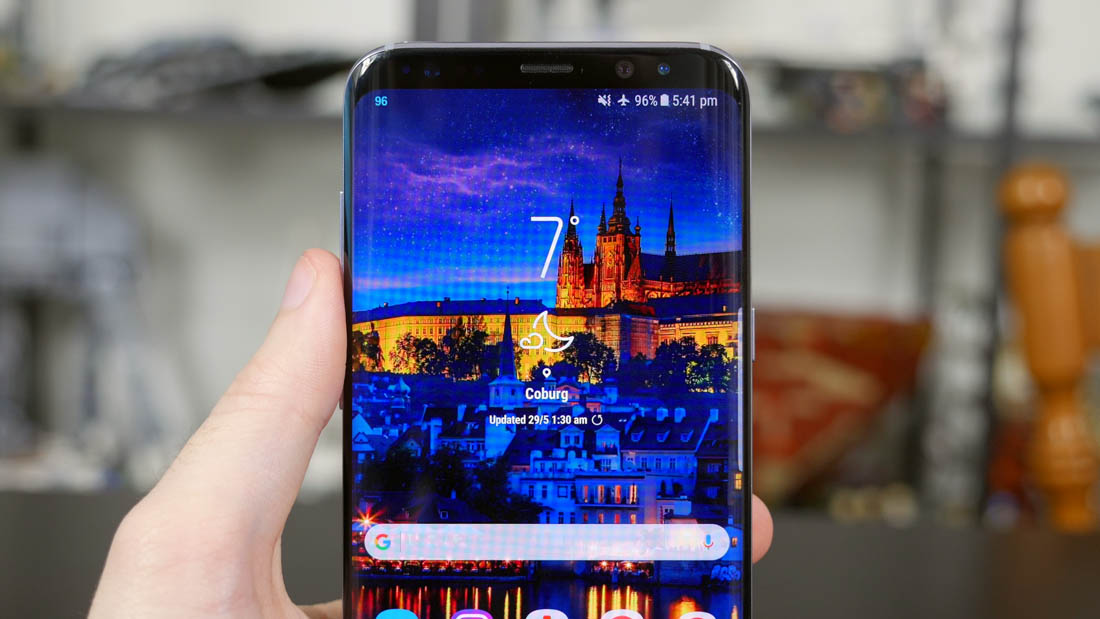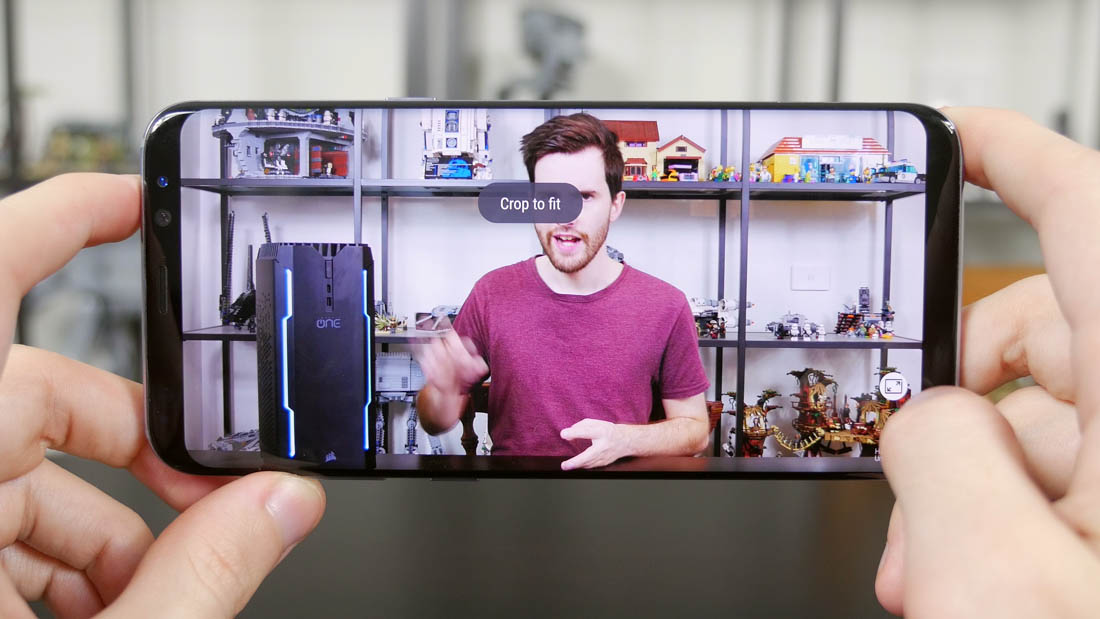Samsung knows how to make a premium Android smartphone. For the past few years, every addition to their Galaxy S series has absolutely nailed it, shooting Samsung to the top of the popularity charts. They are one of a very select group of Android OEMs that introduce innovative features every year, and the Galaxy S8+ is no exception.
The S8 and S8+ are two of three mainstream phones on the market that prioritize screen real estate over bezels - the other being the LG G6 - and in doing so, the Galaxy S8 series has extended its display from a traditional 16:9 aspect ratio to a massive 18.5:9. Along with curved edges and a high-contrast AMOLED display, the Galaxy S8 and S8+ have a truly futuristic design.
In my hands for review is the Galaxy S8+, the larger of Samsung's two phones, with a 6.2-inch display. The smaller Galaxy S8 packs a 5.8-inch screen, though neither phone is much larger than last year's 5.1-inch Galaxy S7 and 5.5-inch Galaxy S7 Edge respectively. As I'm based in Australia, Samsung provided me with the global variant, which packs a Samsung Exynos 8895 SoC; those in the United States will be treated to a Qualcomm Snapdragon 835 instead.
The Galaxy S8+ also includes 64GB of storage with microSD expansion, 4GB of RAM, USB Type-C for the first time, and a 3,500 mAh battery. The camera is the same as the Galaxy S7 - a 12.7-megapixel sensor with OIS and dual-pixel technology - however Samsung has tweaked the software processing on the new device. These improvements to design, hardware and even their software atop Android 7.0 make this the best phone on the market today.
Let's talk about the design, because there isn't another phone available that looks quite like the Galaxy S8+. The front of this handset is absolutely dominated by screen, so much so that it makes every other smartphone ever released look last-generation in comparison. The iPhone 7, the Google Pixel, the Galaxy S7 and more all look straight up bad next to a phone that's basically a gigantic, futuristic screen in your hands.
"(the Galaxy S8)... makes every other smartphone ever released look last-generation in comparison"
There is a small amount of bezel to the Galaxy S8+ at the top and bottom. Along the top Samsung has managed to cram the front camera, in-call speaker and a few sensors into a space no more than 7.5mm tall. And below the display, the fingerprint sensor and capacitive navigation buttons are gone in favor of an on-screen button implementation and a beautifully extended display.
The Galaxy S8+ uses curved glass on the front and back of the handset, leaving a small metal edge on the left and right sides. Due to the slim edges, the power, volume and Bixby buttons (more on that later) are fairly slim, though they exhibit a solid click. The glossy finish to the metal sides around the sides combined with the highly reflective glass panes gives the Galaxy S8+ a premium look, with few seams or distractions. Samsung has nailed this aspect to their flagship phone designs ever since the awful Galaxy S5. The S8+ in particular is leagues ahead of the iPhone in both build and visual quality.
There are some issues associated with a glass body. Firstly, the phone is a massive fingerprint magnet on either side; those who like to keep their phones grime-free will have their work cut out for them. Secondly, the glossy finish to said glass makes the Galaxy S8+ slippery. At times, trying to hold the S8 is like trying to hold a bar of soap. The way the glass just slides right out from your fingertips is unparalleled, and it's not helped by such a thin sliver of metal on either side.
But by far the most pressing concern is the fragility of this design. The Galaxy S8+ has been on the market for over a month now, and there have been loads of consumers reporting cracked screens after just a few weeks of use. Drop the S8+ once, even from a short distance or onto something not particularly hard, and it's highly likely the screen will break. Repair shops are calling the Galaxy S8+ the most fragile phone ever made, and that's not a good thing for everyday consumers that want to use this phone for a few years.
Of course, you can put the S8+ in a case, but that takes away from the beautiful design. What's the point of engineering such an awesome-looking phone if you need to put it in an ugly case to ensure it doesn't shatter at a moment's notice? This is something you'll have to toss up when choosing to buy the S8+.
Another issue with the Galaxy S8+ design that's not related to its fragility is the position of the fingerprint sensor. Samsung moved the sensor from the front to the rear of the handset, which isn't a bad move in itself, but placing right next to the camera is just dumb.
Every time you go to activate the sensor, you'll likely place a bunch of grimy fingerprints all over the camera lens, reducing the quality of your photos if you don't routinely clean the lens.
Luckily you can also secure the Galaxy S8+ through the iris scanner, which worked well during my testing. However, it requires you to turn on the display and swipe up on the lockscreen before it will activate the scanner, which makes the fingerprint sensor much faster in everyday use. Despite how fast the iris scanner is to use, and the poor fingerprint scanner location, fingerprint lock is still the best way to secure the phone.
The Galaxy S8+ is the first Samsung flagship that uses USB Type-C. The company has only moved to this current-generation connector because they also produced a new Gear VR headset with USB-C support; the previous Gear VR was limited to micro-USB, hence why the Galaxy S7 stuck with micro-USB. USB-C is a more versatile connector and should be the standard on all flagship phones released in 2017.
The S8+ also includes a 3.5mm headphone jack, because Samsung isn't a dumb and user-hostile company. The built-in speaker is just a single edge-firing unit with mediocre quality, and that's perhaps the weakest aspect of this phone's sound experience. The phone does support 32-bit/382kHz high quality audio through the headphone jack, though.
Along the top edge you'll find the removable tray for both the microSD card and the nano-SIM. Remember when flagship phones didn't have expandable storage? Yeah, that was a bad time. There's also a notification LED on the Galaxy S8+, which all Android phones should have.
Like previous Samsung flagships, the Galaxy S8+ is IP68 water resistant, meaning it can be fully submerged in up to 1.5m of freshwater for up to 30 minutes. It's always a neat feature to have an enables underwater photography, though it's not a good idea to take the phone into saltwater.
The Display
The Samsung Galaxy S8+ comes with a 6.2-inch 2960 x 1440 Super AMOLED display, with a huge pixel density of 529 PPI. The main difference between this panel and a traditional 1440p display is its length: it features an extra 400 pixels of vertical height, taking it from a 5.55-inch 1440p 16:9 display (with equivalent pixel density) to a 6.2-inch 2960 x 1440 18.5:9 display. In other words, this display is roughly the same width as the 5.5-inch display on the Galaxy S7 Edge, but it's much taller and leads to an impressive 84% screen-to-body ratio.
In terms of display area, which becomes the most important metric to compare displays of different aspect ratios, the Galaxy S8+'s display is 17 percent larger than the Galaxy S7 Edge's display thanks to its extra height. If we were comparing two 16:9 displays, one 5.5-inches and one 6.2-inches, the 6.2-inch display would be 27% larger, but that's not the case here as the Galaxy S8+'s display is much skinnier.
The main benefit of this extra screen real estate is purely from a visual design standpoint. The screen occupies nearly the entire front panel, and it looks amazing. When actually using the phone, for the most part you'll see a bit more content on the screen at any one time. You also should factor in the on-screen navigation buttons that weren't present on the Galaxy S7 Edge, which reduce the relative gain in screen real estate moving to the S8+.
Most apps support the extended Galaxy S8 screen pretty well, particularly those that have a 'content window' that can simply be extended to show you a bit more on the longer display. Some apps are natively locked to 16:9, producing black bars on the S8+ display, but Samsung has a neat button available in the app switcher that attempts to expand these apps to full screen. This feature worked every time I tried it, so you'll rarely need to put up with a basic 16:9 experience.
Samsung has a similar button that appears while watching videos in apps like YouTube and so forth, however this button simply zooms in the content to occupy the entire display. Some may prefer this viewing experience, though as it crops off the top and bottom of the video, it's not a favorite of mine. I'd rather watch with small black bars.
The other main feature of this display is its curved edges. I don't think the curve adds much to the experience, though Samsung has persisted with it for several generations now. Samsung do have some 'edge'-related software features that could be implemented on a flat screen if they really wanted to, and the screen tends to get annoyingly distorted and prone to reflections along the edges. It also makes the phone more fragile.
Samsung tend to produce quality phone displays, and the Galaxy S8+'s panel is no exception. As it uses AMOLED technology, its contrast ratio is unparalleled thanks to deep blacks. Viewing angles are excellent and exhibit almost no color shift at off angles, which is another benefit to AMOLED tech. Samsung also manages to produce a very bright AMOLED panel: this one tops out at over 570 nits, which puts it firmly in LCD territory and makes it easy to view in direct sunlight.
Color performance is standard stuff from Samsung. They calibrate their displays at the factor to be oversaturated, and use a gamut well outside sRGB to achieve this. As Android doesn't support proper color management, the result is a vibrant, beautiful looking image for the most part. Accuracy, though, tends to get thrown out the window: the Galaxy S8+ doesn't perform well in our display tests, falling around the same mark as last year's Galaxy S7 Edge. It's temperature is too cold out of the box, though I didn't suffer from the red tint issue some others were seeing.
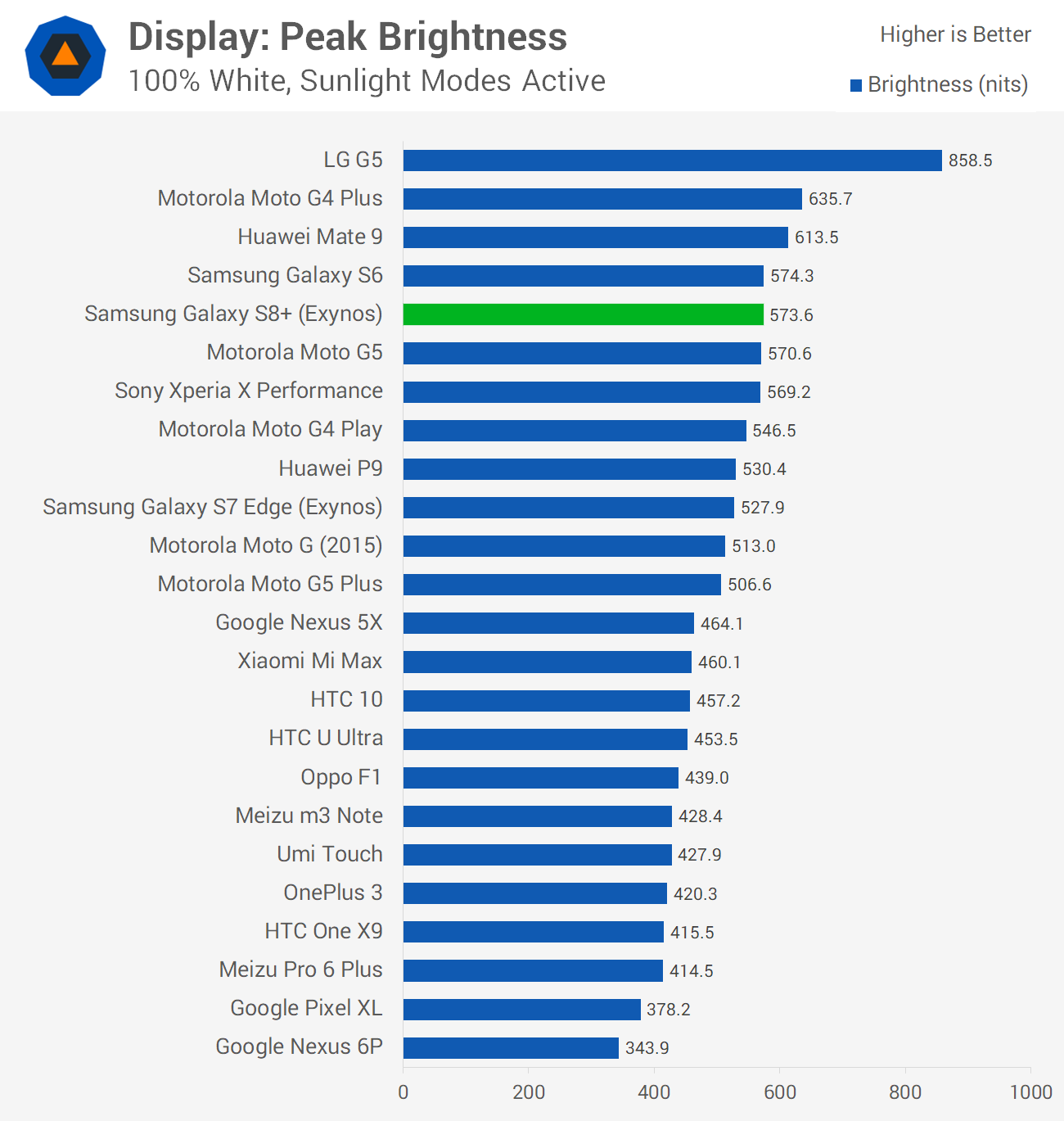
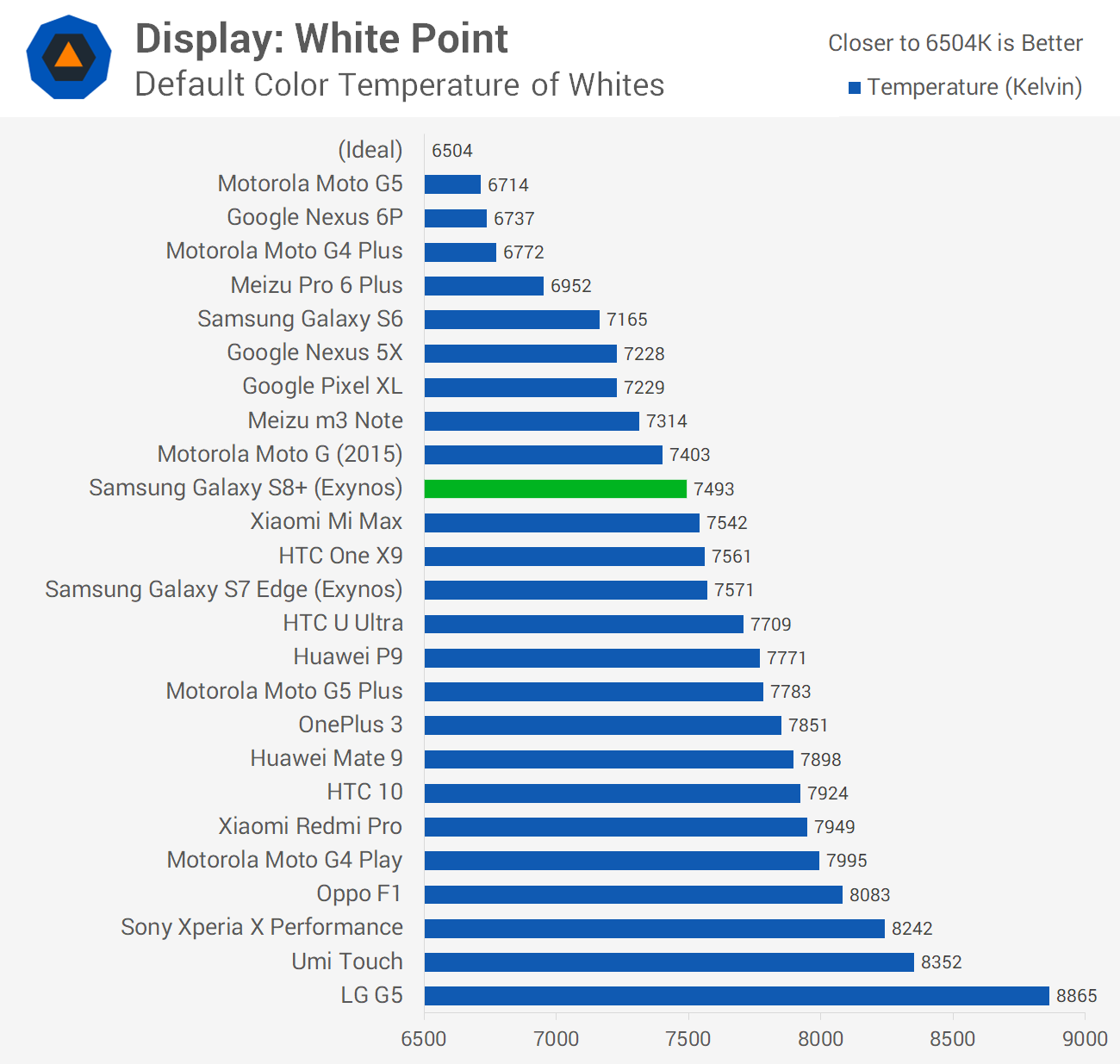
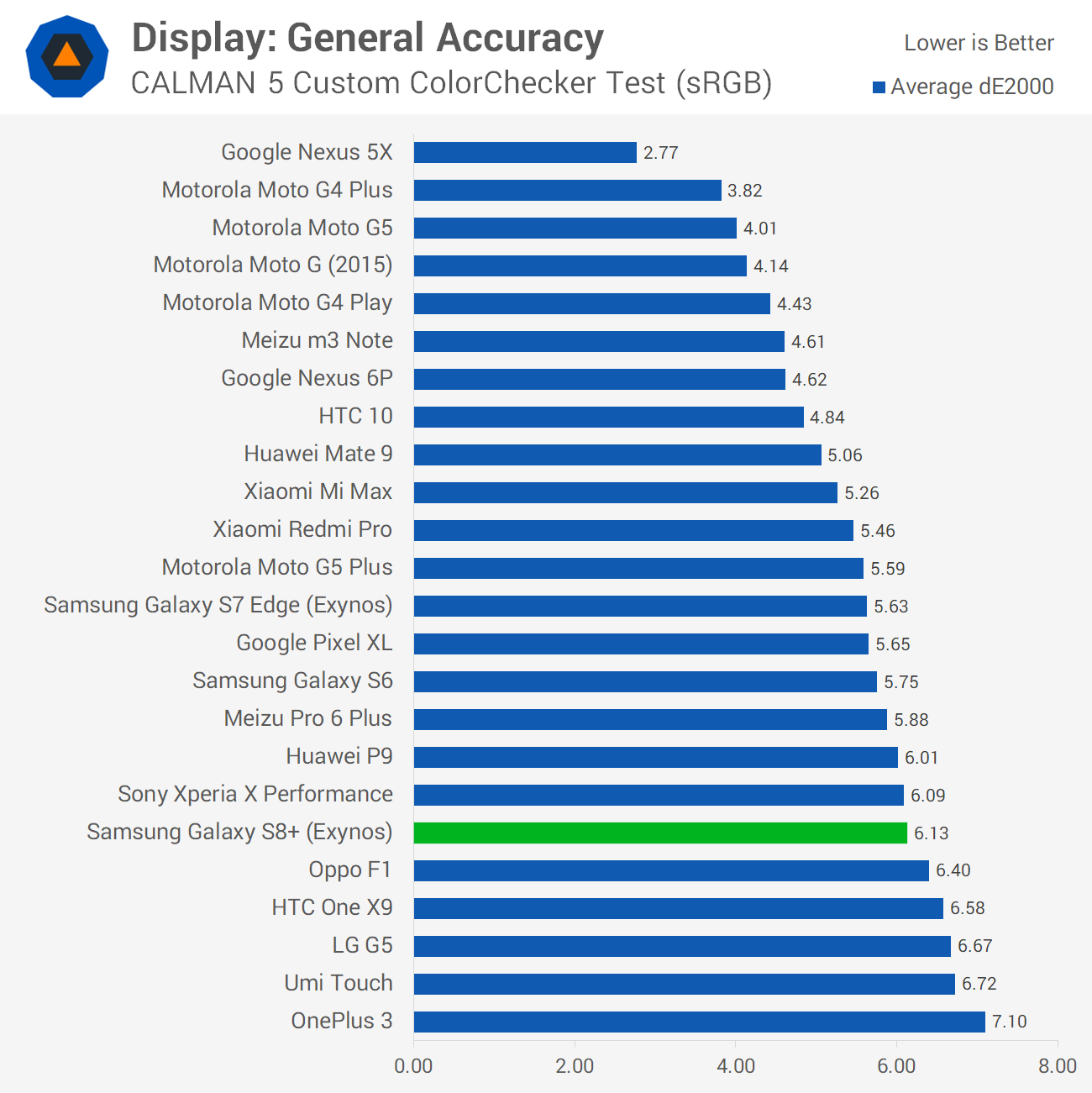
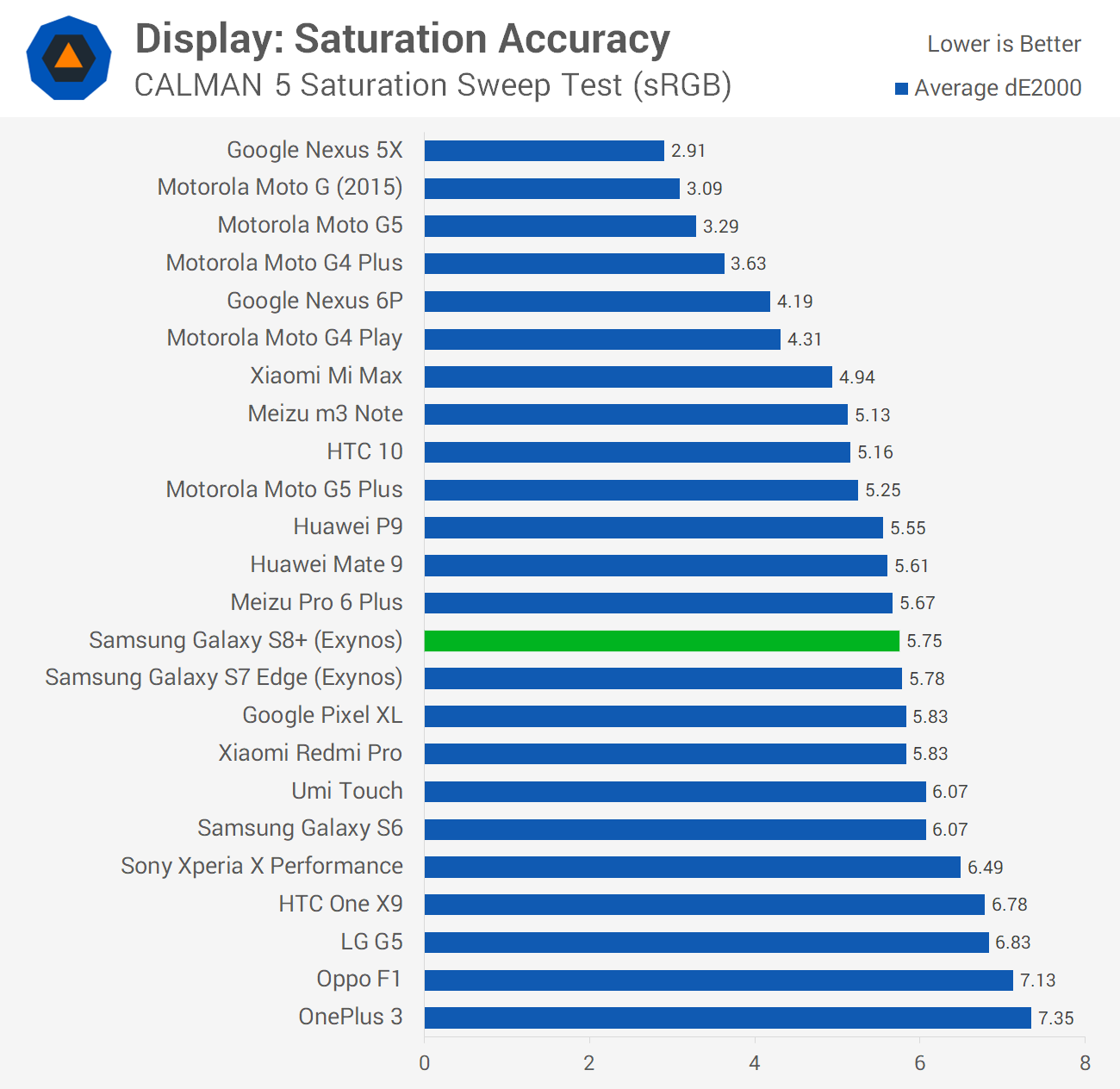
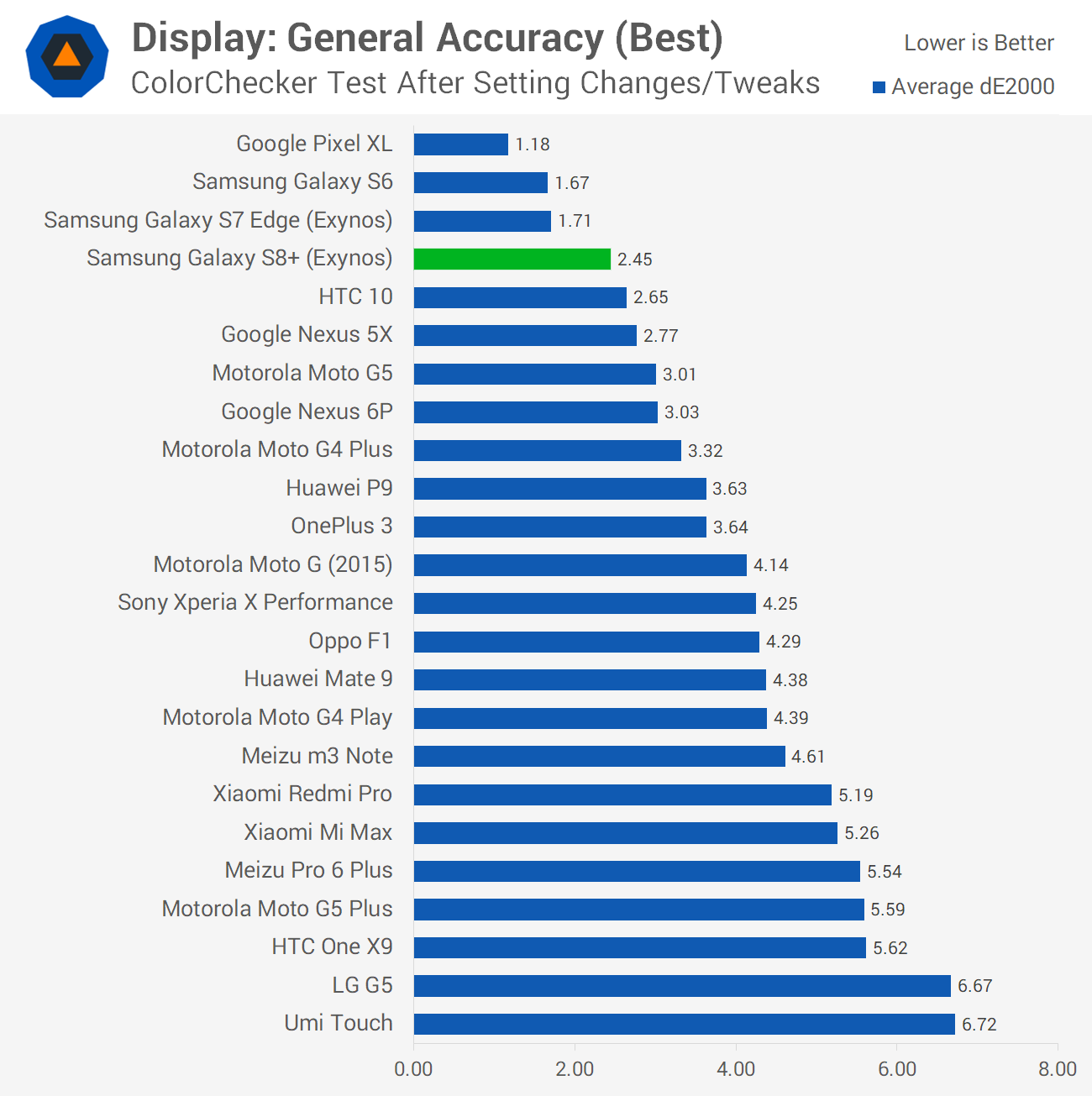
You can correct the display's color performance somewhat by heading into the display settings and switching to 'basic' mode. This does make the OS look like trash, as Samsung has designed it with the screen's oversaturation in mind, though if you need color accuracy, it's as good as it gets. Unfortunately, the S8+'s basic mode wasn't as strong as its predecessor, but it comes close to achieving good sRGB performance.
The S8+ display has always-on functionality, allowing you to see the time and some notifications at all times when the display is 'off'. No gesture is required to activate this feature: the Galaxy S8+ simply illuminates the pixels for this information (at a reasonable brightness level, too) so you can always see the time. It's pretty handy, and something you should consider leaving enabled.
The other thing worth mentioning is the Galaxy S8+ allows you to change its display resolution in the settings screen. The goal here is to provide improved battery life and performance at the expense of display clarity, and in fact the S8+ is set to its FHD+ mode (2220 x 1080) out of the box. Of course, you'll want to switch that up to WQHD+ (2960 x 1440) to get the best experience, and I could easily notice the difference in sharpness after I made this change.
All performance and battery testing was performed using this WQHD+ mode, as that's the mode most people will want to use. Shifting down to FHD+ will provide a slight boost to battery life, but in my opinion it's not worth it when the display looks so amazing at its full resolution.

